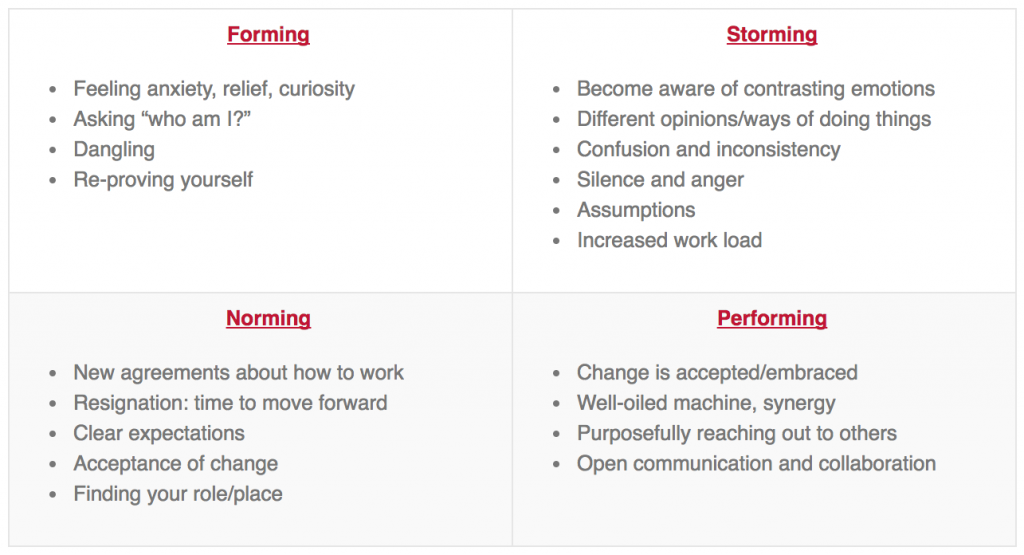If C.H.A.N.G.E. were an acronym,
- C.H.A.N.G.E.: Constant Havoc Amidst Needy Grumbling Employees
- or C.H.A.N.G.E.: Challenging, Hostile, And No-Good Edicts (from management)
- or C.H.A.N.G.E.: Corrosive Headaches Arriving and Not Going (away) Effectively
We laugh because it is funny, and we laugh because it is true. Even organizations and employees who claim to thrive on change reach their limits, and as a rule, we all struggle with the pace of change.
Recently, an organization was faced with several changes happening simultaneously – a change in leadership, a change in processes, and a change to the way peer teams worked together. The change was causing inefficiencies, internal conflicts, office behavior issues, and other related challenges. The employees were struggling to be productive and stay focused. Many organizations find that employees shift their focus to the change and the challenges that come with said change, and find it difficult to return to work as usual.
Can we all agree that organizational change happens, if not routinely, then certainly regularly? If that is true, then how can you help your organization successfully manage change?
One strategy is to use a version of the Tuckman model to encourage your employees to work through their own challenges with whatever change is occurring. Information on the Tuckman model is widely available should you want to know more, but in essence, there are four critical stages (or phases) of change to the Tuckman model, outlined as follows:
1. In the first stage of change, Forming, the team (and individuals) are forming. They learn about the opportunity and challenges, and they begin to tackle the change head-on. Team members tend to behave quite independently. They may be motivated and are usually on their best behavior but very focused on themselves – the “WIIFM” mentality. At this stage, you may begin to see how individual team members respond to change in general and to specific pressure points.
2. In the second stage, Storming, the group hits the proverbial “wall.” The individuals react in various ways to the change, and emotions run high. Different solutions compete for consideration. The group may feel chaotic or dysfunctional in this phase. In some cases, storming can be resolved quickly. In others, the team members begin acting out or focusing on minutiae to evade real issues. Here’s the secret, though: The storming stage is critical to the growth of the team. It can be contentious, unpleasant, and even painful to members of the team who are averse to conflict. But every team – for every organizational change – will go through a storming phase before getting to the last two phases. And, this stage can be beneficial if you conduct stakeholder interviews to understand how the change impacts everyone, and what issues or concerns need to be addressed in a well-defined stakeholder engagement plan.
3. In the Norming phase, teams begin to work together naturally. Productivity begins to increase; team members agree to rules, professional behaviors, and working tools. Trust goes up and motivation increases. Typically, to get from Storming to Norming for an organization-wide change, having the support of leadership would be critical to articulate the vision and purpose behind the change, and to guide everyone through the change seamlessly.
4. After time, most teams will reach the Performing stage. These high-performing teams are able to function as a unit as they find ways to get the job done smoothly and effectively without inappropriate conflict or the need for external supervision. At this point, team members have become interdependent, and this can be driven from having successfully engaged all stakeholders throughout the change process.
As an example, one organization recently brainstormed what the four phases looked like for their organization, and came up with this list:

This activity allowed the organization to openly discuss how each team member felt, and to help them process through the various stages and raise awareness. Try this for your team! And, >> let us know how it worked for you.
If your organization is in the throes of change, consider this application of the Tuckman model to allow your team the space and the time to identify in which of the four phases they find themselves, and to define what the characteristics of each phase look like. Providing the purpose behind the change and understanding how the change will affect each stakeholder is vital to helping successfully manage the change for the organization.

